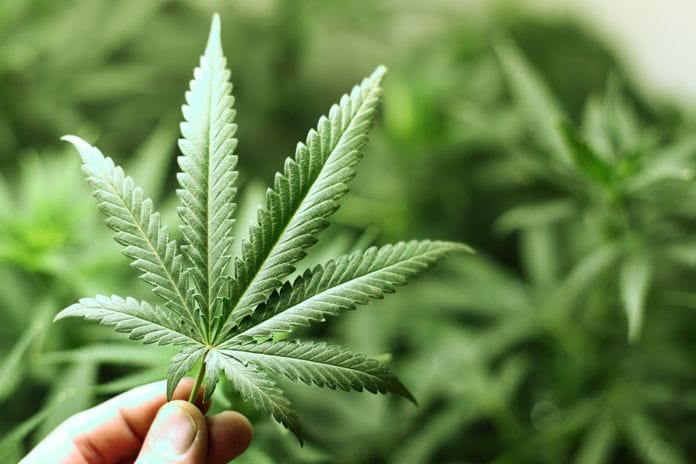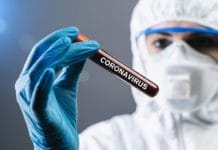The private act of cannabis use, in all of its forms, is becoming not-so-private with our patients in clinical practice. As we rang in the 2018 New Year, California officially became one among the thirty states to legalize the recreational and medicinal use of marijuana. Since January 1st, it has not taken long for citizens to begin exercising their state legalized right. Upon a trip to San Diego, CA, you will see the commercial industry did not drag its feet either. Billboards and clinics have popped up within less than a quarter mile from one another trending on the healing and natural powers of cannabis.
With the on-going legalization of cannabis, what changes are we to encounter within the field of dentistry? Cannabis use is not a new practice but is a topic of interest to the dental field that seems to have been undisclosed until now. With patients feeling this new, legally supported, regular engagement with marijuana, I sense we are about to encounter a greater willingness to be forthright on health history questionnaires. Will we as dental professionals know the indications and contraindications for dental treatment for our patients?
It is now more important than ever to have a grasp on the diverse adverse effects of cannabis on general and oral health. In an article written in the Australian Dental Journal, it states “Cannabis abusers generally have poorer oral health than non-users, with an increased risk of dental caries and periodontal diseases. Cannabis smoke acts as a carcinogen and is associated with dysplastic changes and pre-malignant lesions within the oral mucosa. Users are also prone to oral infections, possibly due to the immunosuppressive effects. Dental treatment on patients intoxicated on cannabis can result in the patient experiencing acute anxiety, dysphoria, and psychotic-like paranoiac thoughts. The use of local anesthetic containing epinephrine may seriously prolong tachycardia already induced by an acute dose of cannabis1.”
Being aware of the oral consequences, along with a patient’s specific patterns of use, will help dental care providers to establish specific needs of care for patients. This begins by incorporating marijuana use in a detailed health history. Determining users who would be at high risk for caries would have been the first factor to cross the dental-oriented mind, research or not, given dispensaries have turned into a colorful, adult candy shop with edibles laced with sugar.
The various forms of cannabis bring up another factor. How will we distinguish the different risks associated with the various forms of use; whether through smoke inhalation, oil, topical, or edible? More research is needed. Regardless of cannabis form, the interactions with anesthetic, in the case of nitrous oxide conscious sedation, deserves critical attention. Are there possibilities cannabis could work as an alternative approach for users to experience conscious sedation? Clinical research for guidelines and continued education on cannabis use needs to be established for all dental healthcare providers.
It is also imperative that we, as dental care providers, make our clinical decisions based on scientific evidence regarding the pharmacologic and psychological effects of marijuana, not on the societal stigma associated with drug use. In a case study conducted by the Journal of the American Dental Association, “A 27-year-old man sought care at the dental clinic with a non-restorable molar requiring extraction. During the review of his medical history, the patient reported taking a “dab” of marijuana approximately 5 hours before his appointment. Because of the admission of recent illicit drug use, no treatment was rendered. The patient was offered an appointment the next day, but he refused, citing bias in regard to his cannabis use2.” This case shows how important it is to be mindful of our reactions and behavior in response to the honesty of our patients who are regular users.
We must remain sensitive and unbiased. But what about when a patient falls into our chair who is not as honest? We need to have systems in place that aid in rendering a patient’s level of cognitive impairment. I asked my sister and brother-in-law, both of whom are in law enforcement, how they determine the level of impairment.
Per a Drug Recognition Expert from the San Diego Sheriff’s Department, “There is a 12-step process to decide what substance is involved. For training of this 12-step process, officers must attend the Drug Recognition Expert Program. A person under the influence of Cannabis will not have the horizontal or vertical gaze nystagmus, which is the involuntary jerking of the eyes, which is seen with alcohol. Instead, they will have lack of convergence; their pupils may be dilated, depending on the person. The individual will have a normal reaction to light, elevated pulse, and high blood pressure. Normally, they will have a white or green pasty substance on their tongue, with dry, cotton mouth. An individual will have glazed eyes and have slow or slurred speech. Some of these symptoms depend on an individual’s tolerance levels, as well as the way they ingested the substance. Most people who have taken a decent amount of marijuana will be uncoordinated. You, as a dental hygienist, will be limited on what you can evaluate as far as drug use, but these will give you some clues.” The development of outlined physical and clinical markers will help us determine and provide our patients with a secure plan for treatment.
The standard of care is set high and ever-changing. That said, there are many questions left unanswered by the dental research community at this point about the legalization of Marijuana and its effects. It is important to be educated on the contraindications and indications of dental care for patients who are regular marijuana users. With a new skill set of knowledge, we can better instruct our patients on the risks to their oral health and manage their treatment needs safely and effectively.
SEE ALSO: Science Confirms Patients with Substance Abuse Disorders have Poorer Dental Health
DON’T MISS: Charcoal Whitening Toothpaste Trend: Should It Stay or Fade Away?
Now Listen to the Today’s RDH Dental Hygiene Podcast Below:
References
- Cho, C., Hirsch, R. and Johnstone, S. (2005), General and oral health implications of cannabis use. Australian Dental Journal, 50: 70–74. doi:10.1111/j.1834-7819.2005.tb00343.x.
- Dental treatment planning considerations for patients using cannabis. Grafton, Sarah Essek et al. The Journal of the American Dental Association , Volume 147 , Issue 5 , 354 – 361.












